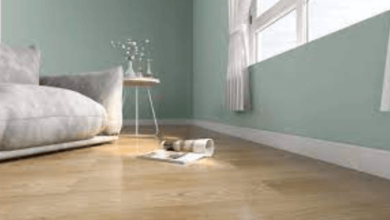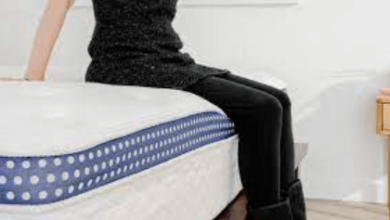Reclaiming Surfaces That Seemed Beyond Repair

From kitchen countertops marked by years of cooking, to outdoor furniture weathered by the elements, surfaces around us can lose their shine over time. Many people assume that once a material is stained, scratched, or worn, it’s beyond saving. But with the right methods, even the toughest cases can be restored. One technique that often surprises people with its effectiveness is abrasive cleaning — a process that uses carefully chosen tools and compounds to cut through years of build-up and bring life back to tired surfaces.
Why Surfaces Wear Down
Everyday living takes its toll on the materials we use most. Kitchens face spills, heat, and knives hitting countertops. Bathrooms endure constant moisture and soap scum. Outdoor areas deal with rain, sun, and dirt. Even inside the home, walls, tiles, and flooring can become dulled by repeated contact.
Wear and tear isn’t just cosmetic, either. Left untreated, grime and scratches can weaken materials, making them more vulnerable to deeper damage. That’s why reclaiming surfaces isn’t only about appearance — it’s about extending their lifespan.
What Makes This Method Different
Unlike general scrubbing or chemical cleaners, abrasive cleaning relies on the physical action of a cleaning medium. This can range from mild powders and pads to more advanced equipment like blasting systems. The key is that it doesn’t just wipe the surface — it removes a fine layer of dirt, staining, or damage, exposing the fresher material beneath.
Done correctly, this method offers results that typical household cleaners can’t match. For example, it can:
- Remove stubborn rust from metal fixtures.
- Strip away paint or graffiti without harming the base material.
- Smooth out scratches on stone or tile.
- Restore wood surfaces by taking off the worn outer layer.
Everyday Uses Around the Home
You might be surprised by how many areas in your home can benefit from careful abrasive techniques:
- Kitchen countertops: Deep stains and knife marks can be reduced, making surfaces look new again.
- Tiles and grout: Years of soap scum or discolouration can be removed more effectively than by scrubbing alone.
- Outdoor furniture: Rusty metal chairs or weathered timber tables can be revived instead of replaced.
- Garage floors: Oil stains and ground-in dirt can be lifted, improving both appearance and safety.
By tackling these jobs with the right approach, you can avoid costly replacements and enjoy the satisfaction of seeing transformation first-hand.
See also: Kitchen Tech on a Budget: Best Low-Cost Software for Home Cooks
When Professional Help Matters
While some forms of abrasive cleaning can be handled at home with store-bought products, more delicate or heavily damaged surfaces are best left to professionals. They have access to specialised equipment and know how to adjust pressure, technique, and materials to avoid damage. For instance:
- Stone and marble need gentle handling to avoid etching or dulling.
- Historical or decorative woodwork may require a fine touch to preserve detail.
- Industrial flooring benefits from heavy-duty methods that household tools can’t match.
In these cases, expert knowledge ensures the surface is restored safely and effectively.
Safety Considerations
Like any powerful cleaning method, abrasive techniques should be used carefully. Too much pressure or the wrong materials can do more harm than good. A few key tips include:
- Always test a small area first.
- Use protective equipment like gloves and goggles when handling abrasive materials.
- Follow product instructions closely — some surfaces may require softer abrasives to prevent scratches.
- Ventilate the space, especially when fine particles are released into the air.
Being mindful of safety not only protects you but also preserves the surface you’re trying to save.
Why Restoration Is Worth It
Choosing to restore rather than replace surfaces offers benefits beyond cost savings. It’s also better for the environment, reducing waste and the demand for new raw materials. In addition, there’s a unique satisfaction in reclaiming something that seemed beyond repair — turning a “lost cause” into something you’re proud to use again.
Think of a well-worn wooden dining table that carries family history. Rather than discarding it, cleaning and refinishing can uncover its natural beauty, allowing it to serve for decades more.
Small Effort, Big Transformation
The idea of reviving damaged surfaces might sound daunting, but often the process is faster and simpler than expected. What starts as a scratched floor or stained bench can, with the right technique, end up looking as though it was just installed. And that’s the magic of giving old surfaces another chance — they reward your effort with a fresh, renewed look and a longer life.
Bringing tired materials back to life isn’t just about appearances. It’s about protecting your investment, reducing waste, and discovering just how resilient everyday surfaces can be when given the right care.




